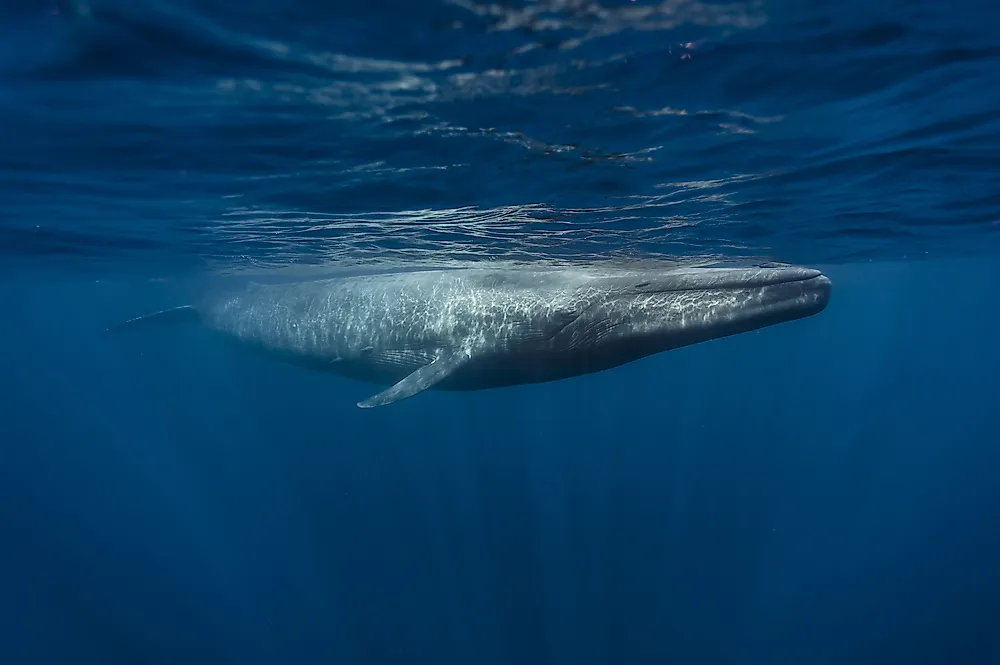What Is The Largest Living Animal?

Blue whales are the largest of all the animals that ever existed on this planet. Ranging between 80 and 105 feet, they are bigger than any elephant or dinosaur known to man. This immense size is equivalent to the total length of three regular-sized school buses. They weigh up to 200 tons which equates to about 15 school buses. Their tongues alone can weigh as much as the largest land animal, the elephant, and their heart rivals the weight of a regular sedan automobile. Blue Whales are carnivorous mammals, and their scientific name is Balaenoptera musculus. Blue whales do not have teeth and instead rely on baleen plates to capture their prey (baleen plates are made out of strong material similar to the keratin found in human fingernails).
Life Span
Blue Whales are among the longest-living animals on the planet. Scientists had been trying to find a way to calculate or estimate their ages for decades until they discovered they could use their earplugs. A Blue Whale’s waxy earplug develops layers approximately every six months. By counting these layers, scientists can estimate the number of years that particular blue whale has existed. Using this formula, their average lifespan has been established to be around 85 years. 110 years is the the longest ever recorded age of a blue whale.
Appearance
Just like their name suggests, blue whales are truly blue when viewed inside the water. However, that is not the case when they appear above the water. On the surface, they are still blue but with a grayish tone. Their underbellies take a different color. Millions of microorganisms attach themselves to the lower side of blue whales to survive, and this gives them some yellowish appearance. A blue whale’s body is flat and broad; although they are huge they are relatively streamlined and slim for speed and travelling of long distances. They can swim at a speed of up to 25 miles per hour when they are agitated. However, their average speed is 5 miles per hour. Viewing the blue whale from the overhead, they are oval shaped and appear like a submarine, safe for the flippers and the flukes.
Reproduction
As blue whales are mammals, they give birth to calves. Unlike other mammals whose young ones start out small and grow exponentially, blue whale calves rank among the largest creatures right from birth. It takes roughly a year for a calf to be born. Inside their mother’s womb, they feed on nothing but milk from their mother. This is what helps them grow so fast, with some gaining a whopping 200 pounds on a daily basis.
Why Do Blue Whales Grow So Big?
The reason blue whales grow so large is that the water bodies they live in provide the best environments for unlimited growth. There is no gravity in the ocean unlike on the earth's surface where it hinders growth beyond the skeleton’s weight limit. Buoyancy gives blue whales the freedom to broaden without restriction. Blue whales at one time were endangered species back in the 1900s when they were being hunted for their highly valuable oil. Luckily, the International Whaling Commission was formed, and now their population is on the rise again. Since they can survive in any large water body, they are free to reproduce and roam to any part of the world and succumb only to natural or accidental causes like an attack from sharks or collision with large water vessels.











